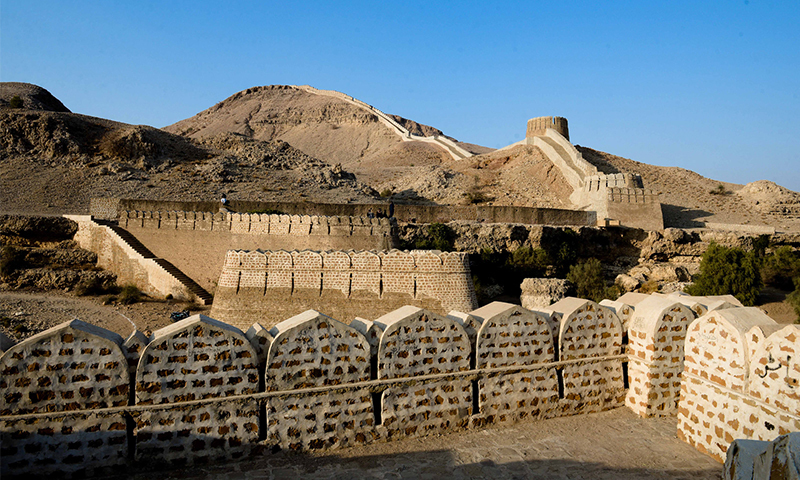.
.
IF Murree is the Queen of Hills, then Gorakh Hill, Sindh’s highest point, which is often compared to that verdant hill station in the north of Pakistan, is a lonely, majestic king.
Located in Dadu district at a height of 5,688 feet in the Khirthar Range, at the border of Sindh and Balochistan, the vistas viewable from the top of the hill are unforgettable. However, getting there is nothing short of an accomplishment.
It took this writer, with a few intrepid fellow travellers, around eight hours from the Superhighway Toll Plaza in Karachi to reach the top of Gorakh Hill — pit stops included — which is a distance of around 423km.
The main reason for such a lengthy journey is the poor condition of roads — a common problem throughout Sindh. From Karachi to Jamshoro it is a fairly smooth ride but the road from Sehwan, the seat of the Qalandar, to Dadu is under construction. However the road (if at all it can be called that) from Johi, the last major town en route to Gorakh, to Wahi Pandi, the last village before taking the road to the hill, is absolutely treacherous.
When Gulzar Khushik, Project Director of the Gorakh Hills Development Authority in Dadu, was asked about the pitiful condition of the roads, he said that road maintenance was not within the purview of his department.
From Wahi Pandi to Gorakh, a distance of 54km, it takes about two hours. However, the climb to the top is next to impossible unless one has a four-wheel drive vehicle and an expert driver. Even then, the almost vertical ascent at some spots and hairpin curves, leaving barely a few inches between the vehicle’s tyres and the edge of the road, looking down into deep ravines, is enough to make even the non-religious start reciting from scripture. “We’re considering new corridors that are less risky,” said Mr Khushik.
Yet as we climbed up towards the summit of Gorakh Hill, the mountain hues were stunning. There was grey, ochre, brown and a speckle of green here and there. The natural sculptures, fashioned by wind and water no doubt, were a sight to behold. The climb was only punctuated by the occasional sighting of a lonely shepherd tending his flock or a camel herder watching over his beasts, or construction workers being hauled to the top.
The sights as one climbed up the hill were indeed something for sore eyes, reminiscent of the Grand Canyon in the US. At night, a canopy of stars was visible in the clear sky above — more stars than one could count. What is more, the silence was all-encompassing while the air was crisp and cool.
A VIP rest house exists along with a regular guest house, while staff quarters and tourist huts are under construction. While the weather in Dadu and Johi below was pleasant, on Gorakh Hill it was absolutely nippy. And as the sun came down, the cold started to bite. Late at night, as load-shedding hit and the wind started howling on the pitch dark hilltop, the feeling was otherworldly.
There is no tuck shop or food available on the hill; the options are bring your own, ask someone else (if other visitors happen to be there), or starve. Not aware of this, we were lucky enough to have been provided food by visiting picnickers from Wahi Pandi, while the grizzly old chowkidar graciously shared his tea with us.
A system is needed for confirmation of space, while a website with details of all visitors require on the hill is essential. A more visible security presence is also required. Police posts have been constructed; they need to be manned and patrols need to be in place for security of visitors.
“June-July is the best time to visit. Gorakh Hill needs commitment. Our vision is to make Gorakh affordable. Currently you need around Rs15,000 for a night stay,” Mr Khushik told.




